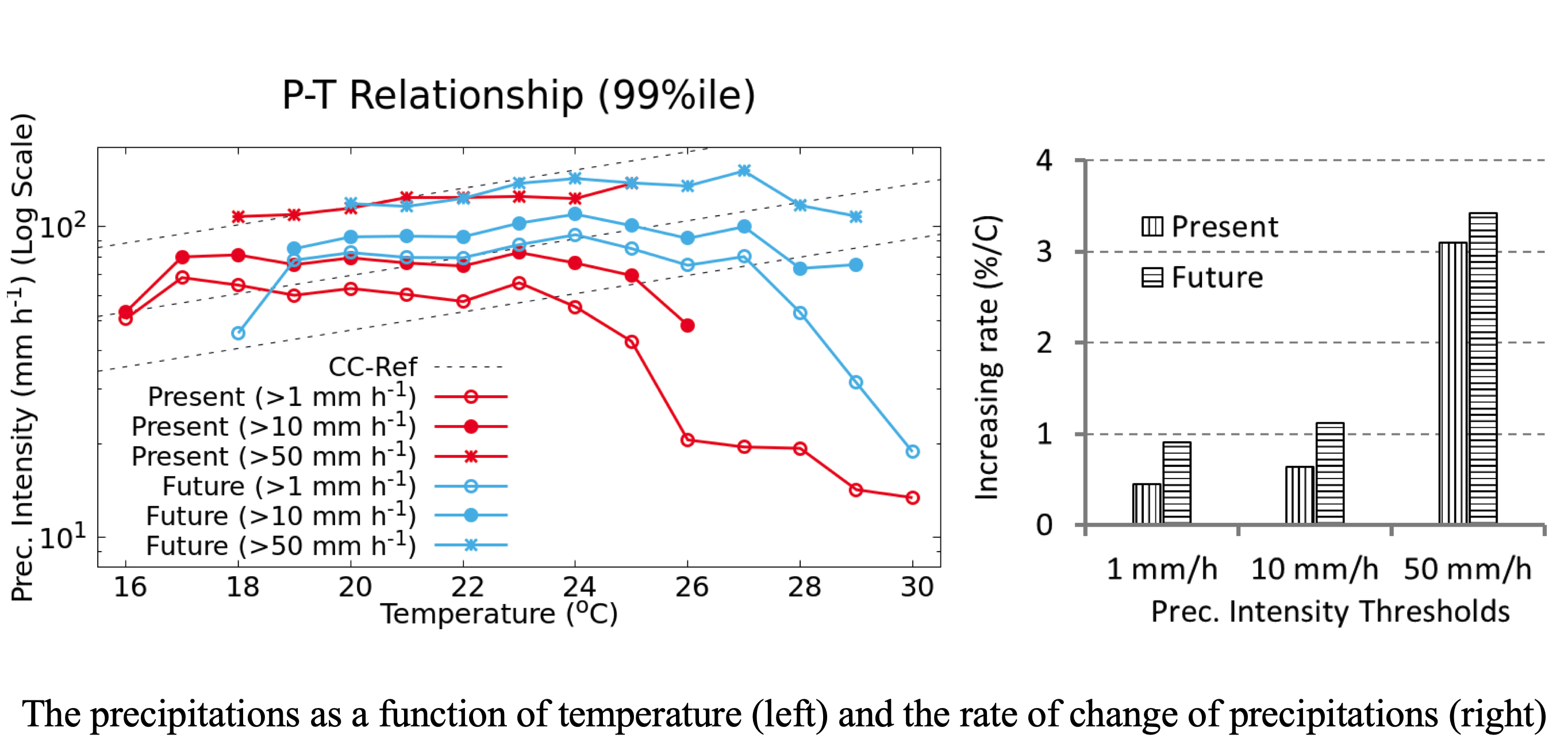Graphical Abstract
Nayak, S., and T. Takemi, 2020: Clausius-Clapeyron scaling of extremely heavy precipitations: Case studies of the July 2017 and July 2018 heavy rainfall events over Japan. J. Meteor. Soc. Japan, 98, 1147–1162.
Special Edition on Extreme Rainfall Events in 2017 and 2018
https://doi.org/10.2151/jmsj.2020-058
Graphical Abstract
NEW
Plain Language Summary: The usefulness of Clausius-Clapeyron (CC) scaling in explaining extremely heavy precipitations is explored in the present-day climate and in pseudo-global-warming (PGW) conditions. This is analyzed by conducting regional-scale numerical simulations for two recent extreme rainfall events that occurred in Japan: the case in northern Kyushu during 5-6 July 2017 and the case in Shikoku Island during 5-8 July 2018.
Highlights:
- The extremely heavy precipitations (>50 mm h-1) followed CC scaling for the temperatures up to 22°C in the present-day climate, while those under the PGW conditions follow CC-scaling up to 24°C.
- The increasing rate of the extremely heavy precipitations in the present-climate condition is noticed as ~3% °C-1 and that under the PGW conditions is anticipated as ~3.5% °C-1.
- The study suggests that the extremely heavy precipitations in future warming climate will be more intense and may cause local flooding and landslides and CC scaling of extreme precipitations exists up to certain temperature over western parts of Japan.







